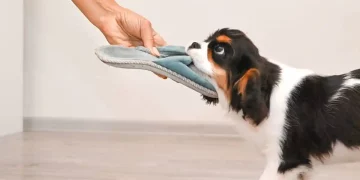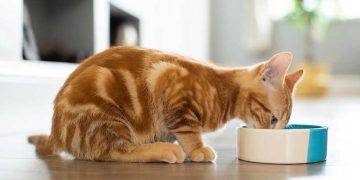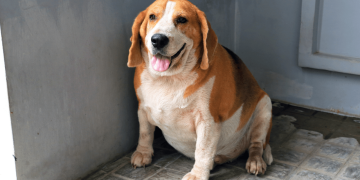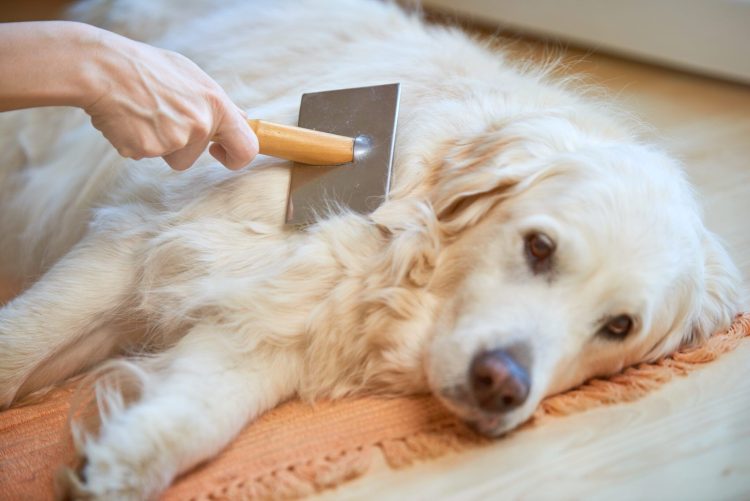Dandruff is a common issue that many pet owners encounter at some point, whether it’s on their dog, cat, or other furry companions. While a small amount of flakes might seem harmless, excessive dandruff can be a sign of an underlying skin problem that may require attention. Fortunately, understanding the causes of dandruff in pets and learning how to prevent and treat it can lead to healthier, more comfortable skin for your furry friend. In this article, we will explore the causes of pet dandruff, how to prevent it, and the treatment options available to help your pet achieve healthier, flake-free skin.
1. What is Pet Dandruff?
Pet dandruff is the shedding of dead skin cells that accumulate in your pet’s coat. Dandruff appears as small, white or flaky patches on the skin or fur. These flakes are usually visible in the coat, especially after scratching or grooming.
While some dandruff is normal, excessive flakes or constant itching could be a sign of an underlying skin condition or health issue that needs to be addressed. In most cases, dandruff is not life-threatening but can cause your pet discomfort and affect their overall well-being.
2. Causes of Pet Dandruff
Understanding the root causes of dandruff in pets is the first step toward finding an effective solution. Dandruff can occur for a variety of reasons, including:
2.1. Dry Skin
The most common cause of dandruff in pets is dry skin. If the environment is too dry or if your pet isn’t getting enough moisture, their skin can become dehydrated, leading to flaking. Dry skin can occur during the winter months when the air is colder and less humid, or in homes with low humidity levels.
2.2. Allergies
Allergies are another frequent cause of dandruff in pets. These can be food allergies, environmental allergies (such as pollen or dust mites), or even contact allergies (from shampoos or cleaning products). Allergies trigger inflammation in the skin, leading to dryness, irritation, and excessive shedding of dead skin cells.
2.3. Parasites and Fleas
Fleas, ticks, and mites are common culprits behind dandruff in pets. These external parasites cause itching and irritation, which in turn leads to dry, flaky skin. Flea infestations can also result in hotspots, which can worsen dandruff and other skin conditions.
2.4. Poor Diet and Nutritional Deficiencies
A poor diet lacking in essential fatty acids, vitamins, and minerals can contribute to dandruff. Omega-3 and omega-6 fatty acids, in particular, play a crucial role in maintaining healthy skin and a shiny coat. If your pet’s diet is deficient in these nutrients, they may develop dry, flaky skin.
2.5. Skin Infections
Bacterial and fungal infections can cause dandruff in pets, especially if the skin becomes damaged by scratching or licking. These infections can make the skin irritated and inflamed, resulting in dandruff. Yeast infections are common in pets with skin folds or damp environments, such as in certain dog breeds like Bulldogs.
2.6. Underlying Health Issues
Certain medical conditions, such as hypothyroidism, hormonal imbalances, or autoimmune diseases, can affect your pet’s skin health and lead to dandruff. If your pet’s dandruff is accompanied by other symptoms, such as hair loss or lethargy, it may indicate a more serious issue that requires a veterinarian’s attention.
2.7. Infrequent Grooming
Not grooming your pet regularly can lead to the buildup of dead skin cells, oils, and dirt, which can contribute to dandruff. Regular grooming not only helps remove excess fur and debris but also stimulates the skin to promote oil production, helping to keep the coat and skin healthy.
3. Prevention of Pet Dandruff
While dandruff can be a common issue, there are several steps you can take to help prevent it and keep your pet’s skin and coat healthy:
3.1. Maintain a Healthy Diet
One of the most effective ways to prevent dandruff in pets is by providing a well-balanced diet. Look for pet foods that are rich in essential fatty acids, such as omega-3 and omega-6, which promote healthy skin and fur. You may also consider adding supplements like fish oil or flaxseed oil to your pet’s diet to boost their skin health.
3.2. Provide Plenty of Fresh Water
Dehydration can lead to dry skin and dandruff. Make sure your pet has access to fresh, clean water at all times to keep them hydrated. Proper hydration supports healthy skin and helps prevent dryness and flakiness.
3.3. Humidity Control
During colder months or in dry environments, consider using a humidifier to increase moisture in the air. This can help combat dry skin caused by low humidity levels. Ensuring that your home has adequate humidity can make a big difference in preventing dandruff.
3.4. Regular Grooming
Brushing your pet regularly helps remove dead skin cells, loose fur, and debris that may contribute to dandruff. For long-haired pets, daily grooming is essential to avoid mats and tangles that can worsen skin irritation. Short-haired pets may only require grooming a few times a week. Grooming also stimulates oil production, which can help moisturize the skin.
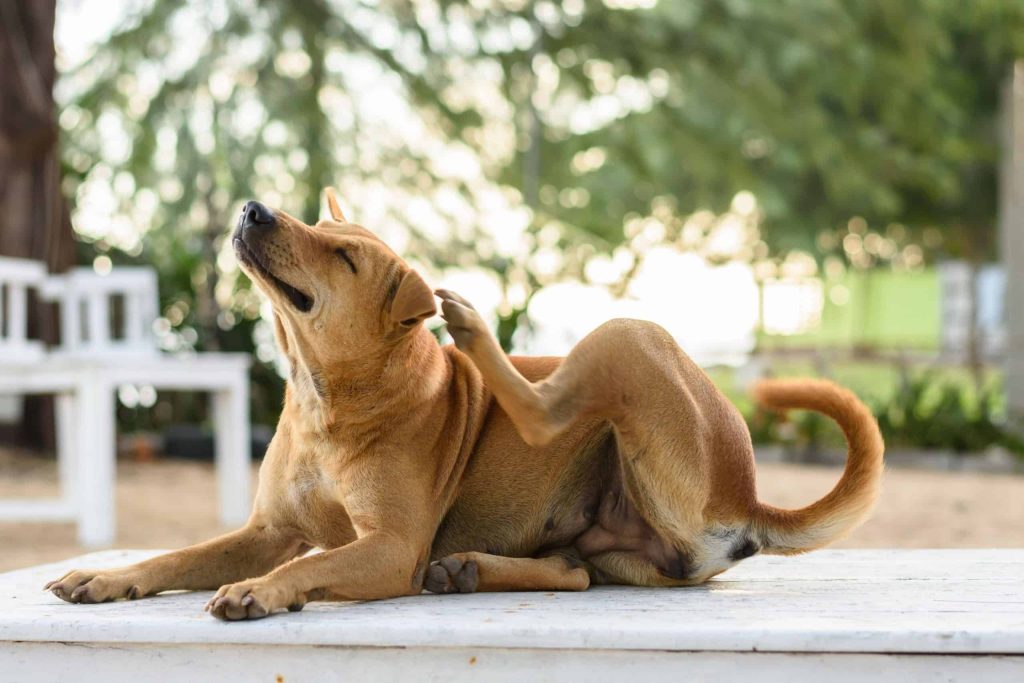
3.5. Parasite Prevention
Regular flea and tick prevention treatments are essential for keeping your pet free from parasites that can cause dandruff and other skin issues. Consult your veterinarian about the best prevention methods for your pet, whether it’s topical treatments, oral medications, or flea collars.
3.6. Avoid Harsh Shampoos
Use pet-safe shampoos that are gentle on your pet’s skin. Shampoos with harsh chemicals or fragrances can strip the skin of natural oils, leading to dryness and dandruff. Opt for hypoallergenic or moisturizing shampoos that are formulated for pets with sensitive skin.
4. Treatment Options for Pet Dandruff
If your pet is already dealing with dandruff, there are several treatment options you can try to help alleviate their discomfort and promote healthier skin:
4.1. Medicated Shampoos
If your pet’s dandruff is caused by a bacterial or fungal infection, your veterinarian may recommend a medicated shampoo that targets the underlying cause. These shampoos often contain ingredients like chlorhexidine or antifungal agents that can treat infections and reduce dandruff.
4.2. Topical Treatments
For pets with dry skin, topical treatments such as moisturizing sprays, oils, or ointments may help to soothe and hydrate the skin. Coconut oil or aloe vera gel can also provide relief from dryness and irritation.
4.3. Omega-3 Fatty Acid Supplements
If your pet’s dandruff is linked to nutritional deficiencies, adding an omega-3 fatty acid supplement to their diet can help improve their skin health. Fish oil or flaxseed oil supplements are common options that support skin moisture and reduce flakiness.
4.4. Prescription Medications
In cases of severe dandruff caused by hormonal imbalances or other medical conditions, your veterinarian may prescribe medications to address the underlying issue. This could include thyroid medications or corticosteroids to manage inflammation and skin irritation.
4.5. Regular Vet Check-Ups
If dandruff persists despite your efforts or if your pet is showing signs of infection or discomfort, consult your veterinarian. A thorough examination can help identify the underlying cause and provide the appropriate treatment. In some cases, blood tests or skin scrapings may be necessary to diagnose conditions such as parasites or hormonal imbalances.
5. When to Seek Veterinary Help
If your pet’s dandruff is accompanied by other symptoms, such as hair loss, sores, excessive itching, or redness, it may indicate a more serious health issue that requires professional care. Early intervention can help prevent further complications and improve your pet’s comfort and well-being.
6. Conclusion
Dandruff in pets can be frustrating, but with the right care and attention, it can be managed effectively. By understanding the causes of dandruff and implementing preventive measures such as proper diet, regular grooming, and parasite control, you can reduce the occurrence of flakes and help your pet maintain healthy, moisturized skin. If the problem persists or worsens, consulting your veterinarian will ensure that your pet receives the appropriate treatment to restore their skin health.


